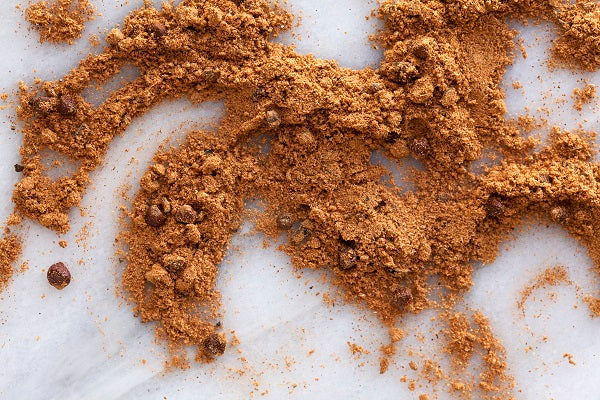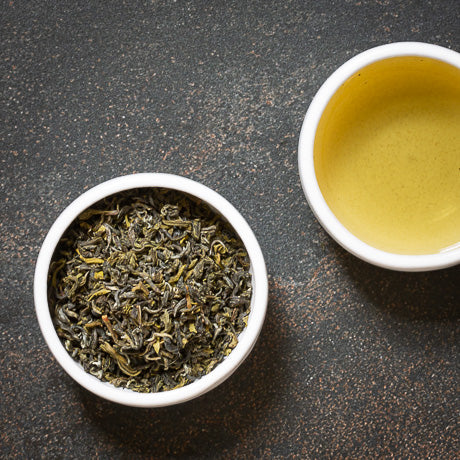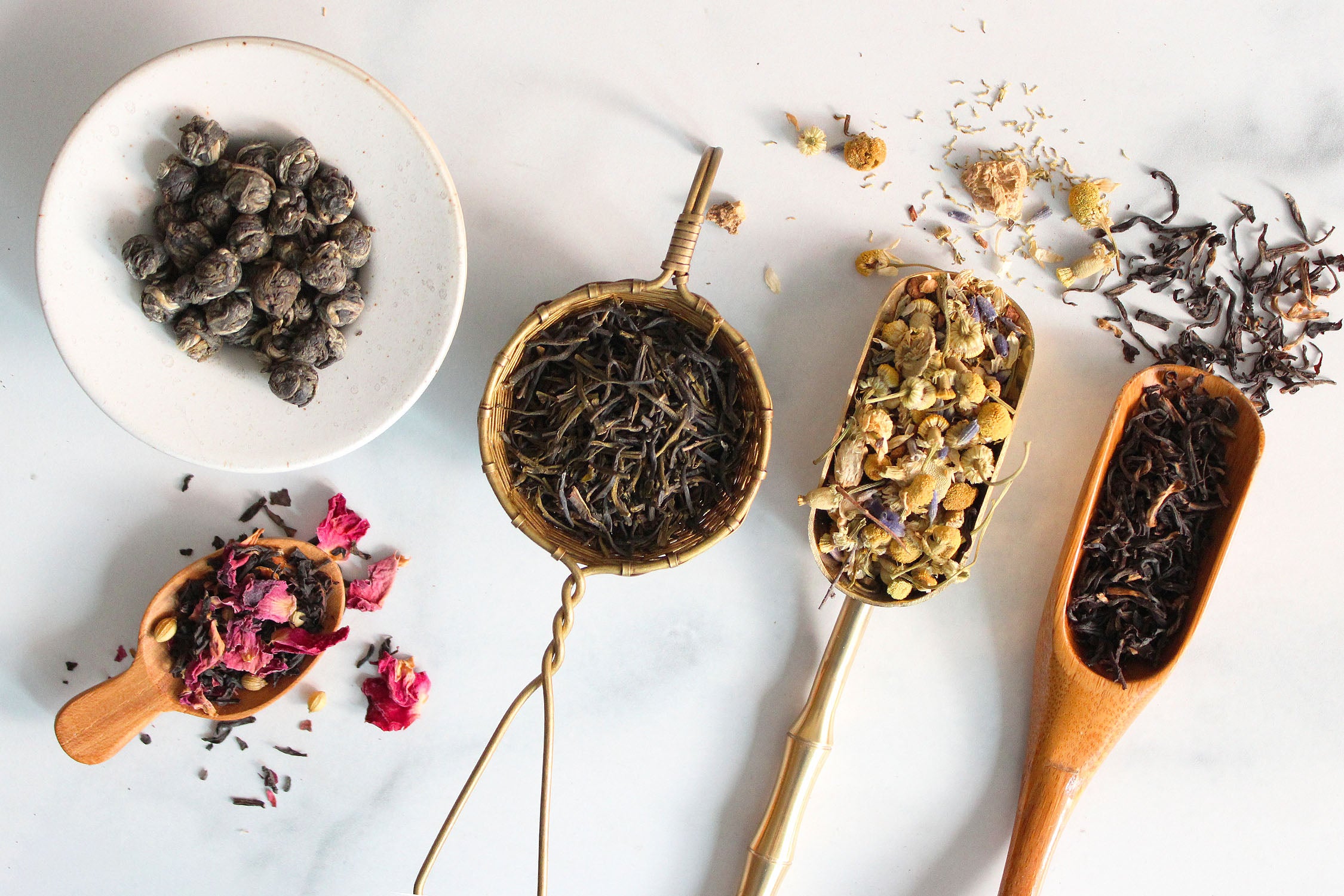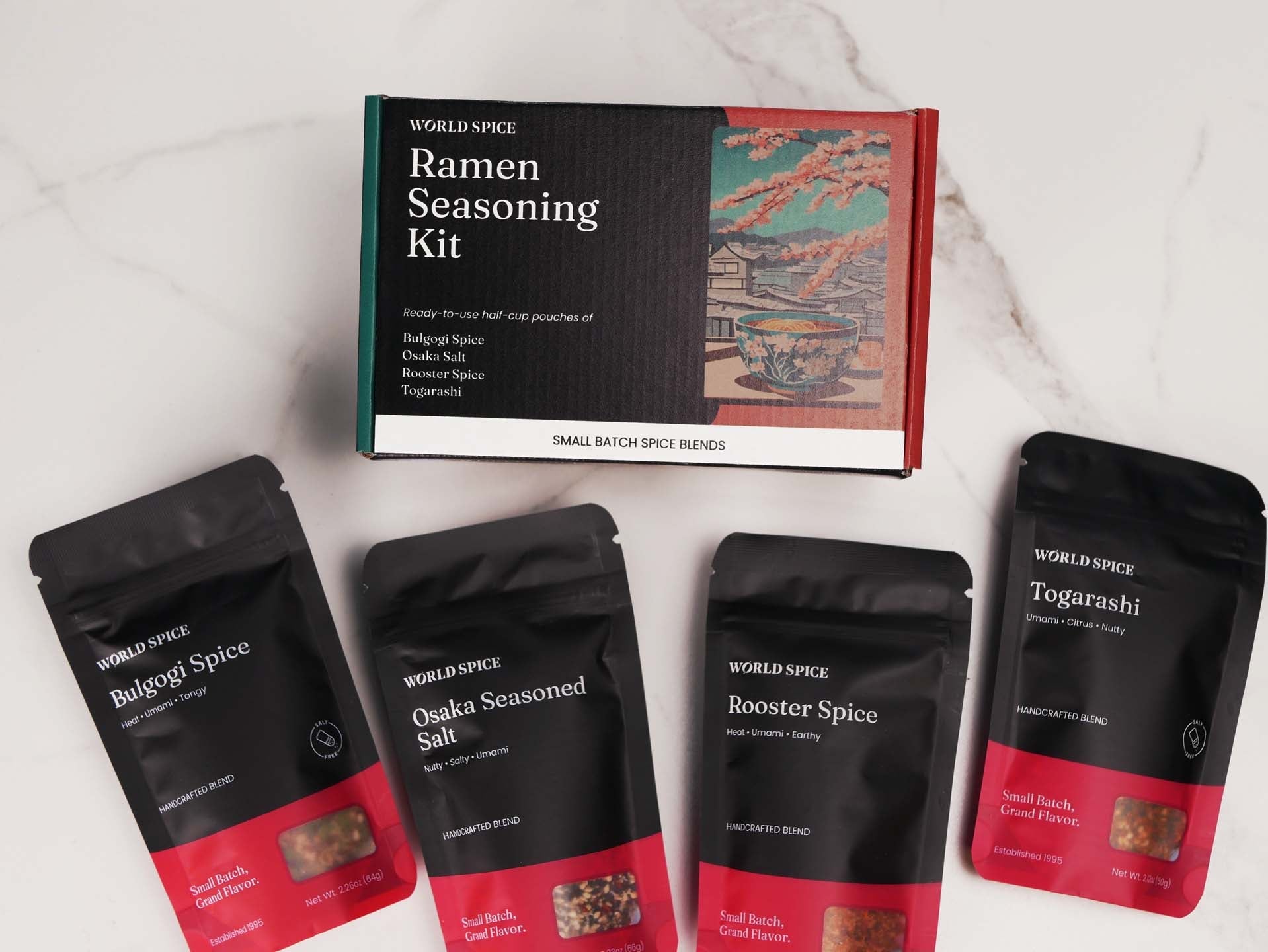Recipes
Matcha Smoothie Bowl
Food should be a feast for the senses and this stunning breakfast bowl is made visually vibrant with Matcha powder. This nutrient dense green tea powder gives you a boost of energy and anti-oxidants in every teaspoon. The color is intense, but the mild vegetal flavor pairs with all manner of ingredients and doesn't overwhelm. Here we've blended pineapple, ginger and spinach until velvety and garnished with fruity toppings, but customize the ingredients to suit your taste with crunchy nuts or creamy yogurt, just don't forget the Matcha!
Learn moreRhubarb Rugelach
1 hr
This recipe is a true keeper, with a surprisingly easy-to-make dough that relies on the magic of whipped butter and cream cheese. While the soft dough chills, prepare a luscious jam with a classic pairing of strawberries and rhubarb. Cook it down to the perfect consistency, ready to be spread and rolled between the dough. For a tantalizing twist, we chose the concentrated flavor of ginger and added a secret ingredient — mace. This lighter and peppery spice complements the tangy fruit, enhances the lemon zest, and fills the jam with a sweet and aromatic spice allure. Get ready to savor each bite of these heavenly treats.
Learn moreWorld Spice Chili Crunch
World Spice Chili Crunch is a staff favorite soon to be a fan favorite. The wave of chili crunch obsession spread through the World Spice team like wildfire thanks to the genius who gifted each and every one of us a jar. This incredible condiment satisfies on every level. The store bought version is a powerhouse with medium heat and maximum flavor. It is both chewy AND crunchy with a deep umami base. It's good on everything! So...the journey to our version of this recipe began. The motivation was partly for fun to play with chili flavors and partly practical to turn out a version without MSG or preservatives. We hit the kitchen and it took a few tries! In the end this closely timed process turned out the best result. What we discovered was a temperature sweet spot while frying the chilies. Too low and they won't stay crisp and too high and you'll burn them. Our version requires minimal chopping and is also nut free because everyone needs chili crunch. We bumped up the heat with 3 different types of chilis so expect more fire from this version. We added the zing of Sichuan peppers and bumped up the umami with Cascade Mushroom Mix.Try your own version of chili crunch with any combination of dried chilies! This recipe makes a generous quart of crunch, plenty for any chili-head and enough to gift and share.
Learn moreArabic Chicken Kabsa
Kabsa is thought of as the national dish of many Arab states. Consisting of rice, meat, spices and often vegetables, all the ingredients in Kabsa are traditionally cooked in a single pot. The protein often varies by region, and can include beef, goat, or even camel. Chicken is among the most common, though, and it's what we've stuck to here. We'll save the camel for next time.The spices are the star of the show in these Middle Eastern dishes, which use varied seasonings to create wide arrays of amazing flavor. Black lemon, or loomi, makes this simple chicken and rice version a standout. We toast the spices and pan seared chicken thighs to enrich the broth for the rice. The resulting Kabsa has many layers of flavor and makes an amazing one-pot dinner for a large group or family!
Learn moreJuniper Duck Breast Pastrami
Make your own pastrami! Easy? Yes. Impressive? Yes. Delicious? YES!!!! This pastrami will bring Pacific Northwest flavors to your charcuterie board and guests clamoring for more. Juniper berries impart sweet, piney flavors with citrus top notes that play perfectly with European Coriander Seed. The smoky layers on the crust hint at a campfire flavored with Alderwood Smoked Salt and Upper Left Madrona Smoked Honey. This pastrami has turned many into duck lovers and will be the first to go on your smorgasbord. Use for charcuterie plates, sandwiches and pasta dishes. Tasty cold.
Learn moreCrispy Tofu Salad with Turmeric Honey Ginger Vinaigrette
If you're not a fan of tofu, this salad may convert you. Tofu is a sponge and it takes on any flavor you marinate it in, so the right seasoning can totally transform this healthy protein. We spiced it up this time, and infused the tofu overnight in soy sauce, ginger, Korean Chile and garlic. The tofu then gets pan seared for crispy caramelized edges before adding it to the salad. A turmeric honey ginger vinaigrette dresses the peppery arugula and shaved carrots. A stunning garnish puts the final touch on this delicious dish. With a quick dusting of toasted sesame seeds and Pacific sea salt, the salad is complete.
Learn moreOrange, Cinnamon and Cranberry Tart
Spring 2020. I was craving pie. Sadly, I had no flour and no fresh fruit, aside from an old orange. Thus, the Cranberry and Orange Tart was born out of pure necessity. Dried cranberries were used here, but dried tart cherries can easily be substituted. For this, the crust is made out of saltines, and so the sweet-tart-salty complexity is a flavor explosion. Adding a touch of Indonesian cinnamon and ginger powder enhances these flavors. The saltine crust is just fun, and much less labor intensive to make than tart dough. This is what you get when you play with your food!
Learn moreGingerbread Caramels
Some spices are just born leaders, with big loud voices and an overwhelming presence. Mace can be one of those show-offs, unless properly tamed. Mace is actually the lacy outer covering of the nutmeg, but its flavor is a bit earthier than nutmeg - think bass vs. soprano. Here we're getting the most out of it's character by combining it with other spices to recreate the scintillating flavor of freshly baked gingerbread, but in a soft, chewy caramel candy, perfect for gift-giving this holiday season.Now there's nothing to fear in caramel making, as long as you follow a few simple rules. Rule #1 is know your altitude. Sugar cooks quicker (which means that water evaporates faster, and that's what control's your ultimate texture) at higher altitudes, so the general rule is to subtract 2 degrees for every 1000 feet above sea level from your final temperature. For example, our basic, sea level recipe calls for a final cooking temperature of 240 F. for a soft caramel. My kitchen is around 3000 ft., so, after a bit of experimenting, I finally altered the target temperature to 238 F. It may take a few tries to find the softness that you prefer - I like my caramels a bit on the softer side. The second rule to follow is to STIR CONTINUOUSLY while cooking the caramel. Dairy products burn really easily at high temperatures, and you don't want that. Thirdly, know your thermometer. Test it by filling a large glass with ice and enough water to separate the cubes. Let it sit for a minute, then insert your thermometer - it should read 32 degrees. If not, make a note of how far off it is, and adjust your cooking accordingly. And remember, the caramel mixture will be extremely hot, so resist the temptation to taste it until it's cooled off. I like to keep a dab on my spatula for tasting purposes, since it will cool off quickly. Follow these few rules, and you'll find yourself on the road to candy making success.Note: To make clean up a breeze, after you pour out the caramel refill the pot with water. Cover and bring to a boil, then set aside for a few minutes. The hot water and steam will help dissolve the cooked sugars.
Learn morePoudre Forte
Poudre Forte is a wonderful spice mix that was used throughout medieval Europe and is still used today by culinary recreationists. The actual components may vary, but Poudre Forte, or "strong powder," is commonly based on cinnamon, clove and black pepper, some of the most important tender of the early spice trade. We've added grains of paradise to enhance the flavor. A sweetly aromatic blend with a good bite, it can be used liberally in both sweet and savory dishes.
Learn more














